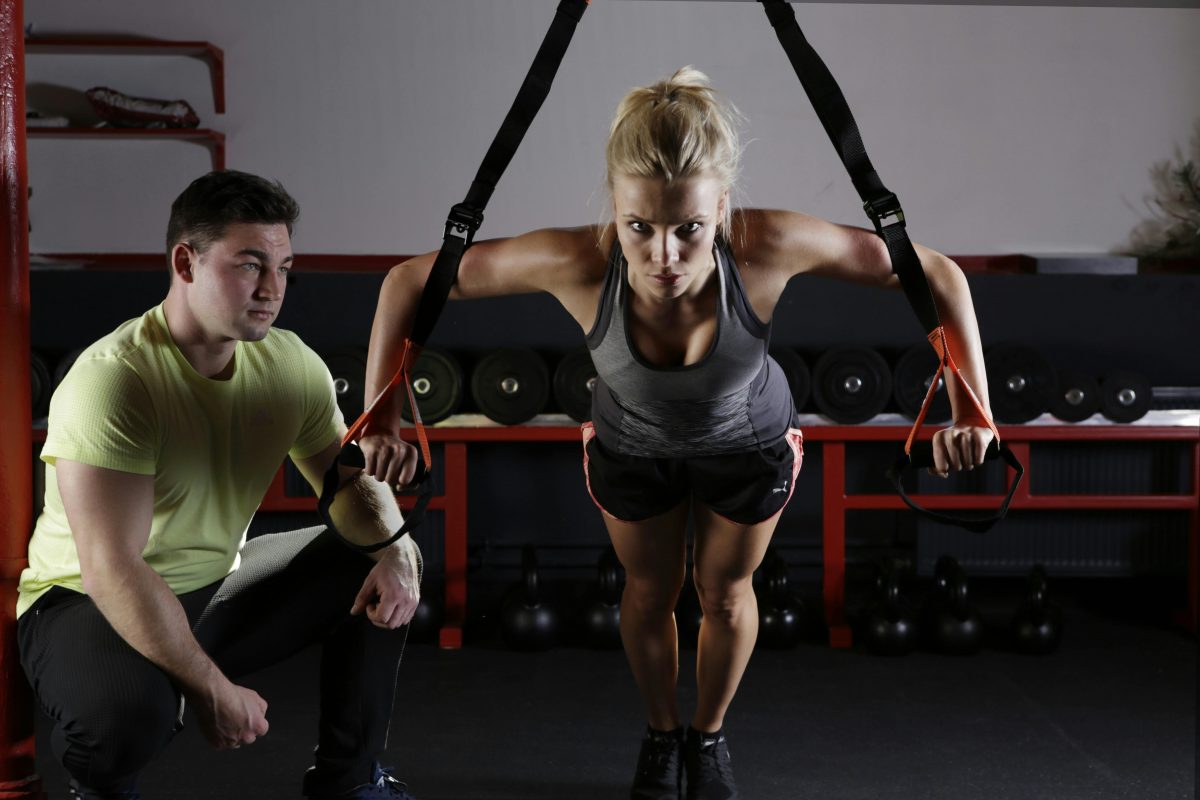Last Updated on: 14th July 2024, 09:28 am
Introduction to Body Composition

Understanding body composition is a cornerstone in the realm of fitness. It’s not just about weight; it’s about what your weight comprises. This insight is crucial for tailoring fitness and nutrition plans to meet individual goals effectively. Body composition analysis breaks down your weight into muscle, fat, and bone, offering a detailed map of your physical makeup.
Contrastingly, Body Mass Index (BMI) offers a more simplistic view, calculating body mass divided by the square of the body height. It doesn’t distinguish between muscle and fat, leading to potential misinterpretations of one’s health status. Recognizing the difference between these two measures can significantly enhance your approach to fitness, steering you towards more personalized and effective strategies.
Embracing body composition as a fitness indicator propels you beyond the limitations of traditional scales, providing a comprehensive understanding of your physical health. This knowledge not only fuels motivation but also equips you with the tools to sculpt a healthier, more vibrant self.
Understanding the Components of Body Composition

Fat Mass vs. Lean Mass: Definitions and Roles in Overall Health
- Fat mass refers to all the fat tissue in your body, essential for energy storage, protection, and hormone regulation. However, an excess can lead to health issues.
- Lean mass, on the other hand, encompasses muscles, bones, and organs. It’s the powerhouse of your metabolism, driving calorie burn even at rest.
Balancing these components is key to achieving optimal health and fitness.
The Significance of Water Weight in Body Composition Analysis
Water weight, often overlooked, is a critical player in body composition. It fluctuates daily, influenced by diet, exercise, and hydration levels. Understanding its role is crucial for accurate body composition analysis. Water constitutes a significant portion of lean mass, affecting weight and measurements. Recognizing these fluctuations can prevent discouragement from temporary weight gains, guiding towards a focus on long-term body composition changes rather than short-term weight shifts. This insight empowers individuals to make informed decisions about their health and fitness journey, emphasizing the importance of hydration and its impact on overall body composition.
Exploring Methods for Measuring Body Composition

Bioelectrical Impedance Analysis (BIA): A Gateway to Accessibility
Bioelectrical Impedance Analysis, or BIA, stands as a beacon of accessibility in the realm of body composition measurement. This method, leveraging the resistance of body tissues to electrical currents, offers a quick and non-invasive glimpse into your body’s makeup. Fat, muscle, and water each conduct electricity differently, allowing BIA devices to estimate the proportions of each. Its simplicity and affordability make it a popular choice for individuals embarking on their fitness journeys, providing a straightforward way to track progress over time.
Dual-Energy X-ray Absorptiometry (DEXA): The Gold Standard in Precision
When precision is paramount, Dual-Energy X-ray Absorptiometry, or DEXA, emerges as the gold standard. This advanced technique uses low-level X-rays to differentiate between bone mass, fat mass, and lean muscle tissue with unparalleled accuracy. The process, though more complex and costly than BIA, offers a comprehensive view of body composition, including bone density. Its detailed insights are invaluable for athletes, researchers, and anyone seeking a meticulous understanding of their physical makeup.
Hydrostatic Weighing and Air Displacement Plethysmography: Diving Deeper into Advanced Methods
For those seeking depth in their analysis, hydrostatic weighing and air displacement plethysmography offer advanced alternatives. Hydrostatic weighing, once considered the gold standard, calculates body density by measuring underwater weight. This method, though accurate, requires immersion in water and access to specialized equipment. On the other hand, air displacement plethysmography, utilizing the Bod Pod, measures body volume by displacing air in a sealed chamber. Both methods provide detailed insights into body composition, catering to the needs of researchers and individuals with specific health and fitness goals.
The Role of Body Composition in Fitness and Performance

Body composition plays a pivotal role in athletic performance, influencing everything from endurance to strength. A harmonious balance between muscle mass and fat percentage is crucial. Muscles, the engines of our body, power us through activities, while excess fat can weigh us down, affecting agility and stamina.
- High muscle mass can enhance strength and power, essential for sprinters and weightlifters.
- Lower fat percentage can benefit endurance athletes, improving efficiency and speed.
Understanding the relationship between muscle mass, fat percentage, and performance is key. Tailoring fitness goals based on body composition insights allows for a targeted approach. Recognizing whether to focus on fat loss, muscle gain, or a combination of both can streamline efforts, making training more effective. For instance, a runner might aim to reduce body fat to enhance endurance, while a bodybuilder focuses on increasing lean muscle mass. This personalized strategy ensures that efforts in the gym translate to performance gains, where it truly matters.
Embracing body composition as a guide, athletes and fitness enthusiasts alike can sculpt their training and nutrition plans with precision. This not only maximizes performance but also fosters a healthier, more balanced body. In the realm of fitness, understanding and optimizing body composition is not just an advantage; it’s a necessity.
Body Composition Targets and Healthy Ranges

Guidelines for Healthy Body Fat Percentages by Age and Sex
Understanding the ideal body fat percentage is essential for gauging fitness and health. For women aged 20-40, a healthy range is considered to be 21-33%, while for men in the same age bracket, it’s slightly lower at 8-19%. As we age, these percentages naturally increase. Women aged 41-60 should aim for 23-35%, and men for 11-22%. These ranges account for the natural changes in metabolism and body composition that occur with age.
The Concept of Ideal Body Composition for Different Fitness Levels and Sports
Different sports and fitness levels demand unique body compositions for optimal performance. Endurance athletes, for example, benefit from lower body fat percentages, enhancing efficiency and speed. In contrast, athletes in strength and power sports require higher muscle mass to maximize force and power output. The ideal body composition varies significantly across sports: a marathon runner may strive for a leaner physique, while a bodybuilder focuses on maximizing muscle mass. Tailoring body composition goals to fit specific sports and fitness levels is crucial for achieving peak performance and maintaining overall health.
Adopting a personalized approach to body composition can dramatically improve one’s fitness journey. Whether aiming to shed fat, build muscle, or a combination of both, setting clear, achievable targets based on age, sex, and fitness aspirations is key. This strategic focus not only enhances athletic performance but also promotes a healthier, more balanced lifestyle. By understanding and applying these guidelines, individuals can make informed decisions about their training and nutrition plans, leading to more effective and satisfying results.
Optimizing Body Composition: Diet and Exercise Strategies

Macronutrient Balance for Body Composition
Optimizing body composition starts with nutrition. A balanced intake of macronutrients—proteins, fats, and carbohydrates—is essential. Proteins are the building blocks of muscle and should be prioritized to support muscle repair and growth. Carbohydrates fuel workouts and recovery, while healthy fats are vital for hormone production and nutrient absorption. The key is to find the right balance that fuels muscle gain and fat loss, tailored to individual energy needs and fitness goals.
Strength Training’s Impact on Muscle Mass
- Strength training is a powerful tool for increasing lean muscle mass.
- Engaging in resistance exercises triggers muscle hypertrophy, enhancing strength and metabolic rate.
- This, in turn, boosts calorie burn, even when at rest.
- Incorporating a variety of compound movements that target multiple muscle groups can maximize muscle growth and improve overall body composition.
Cardiovascular Exercise and Fat Loss
- Cardiovascular exercise is a cornerstone of fat loss.
- It increases heart rate and calorie expenditure, which can lead to a reduction in body fat.
- However, the impact of cardio on body composition extends beyond burning calories; it also improves cardiovascular health and endurance.
- Integrating both high-intensity interval training (HIIT) and steady-state cardio can optimize fat loss while preserving muscle mass, leading to a more defined and toned physique.
By combining a strategic diet with a well-rounded exercise regimen, individuals can sculpt a body that’s not only fit but also healthy and strong. Understanding and applying these principles is crucial for anyone looking to improve their body composition and, by extension, their overall fitness and health.
Monitoring Changes and Setting Realistic Goals

Tracking progress over time is not just beneficial; it’s essential. Observing changes in body composition provides tangible evidence of your hard work, fueling motivation and guiding future strategies. It’s the compass that keeps your fitness journey on course, ensuring every step taken is in the right direction.
- Setting achievable body composition goals is a delicate art.
- It requires a balance between ambition and realism, tailored to individual capabilities and circumstances.
- These goals act as milestones, breaking the journey into manageable segments.
- Whether it’s reducing fat percentage, increasing muscle mass, or both, clear targets provide focus and a sense of purpose.
Adjusting diet and exercise plans based on body composition analysis results is crucial. This dynamic approach allows for fine-tuning, ensuring that strategies remain effective and aligned with evolving goals. If analysis reveals an unexpected increase in fat mass, for instance, dietary adjustments can recalibrate the path forward. Similarly, if muscle growth plateaus, a revised exercise regimen can reignite progress. This iterative process of analysis and adjustment is the engine of continuous improvement, driving towards optimal health and fitness.
Embracing the cycle of setting goals, monitoring progress, and making adjustments is a powerful strategy. It transforms the journey towards improved body composition into a structured, evidence-based quest. This methodical approach not only maximizes the chances of success but also makes the journey more rewarding, providing clarity and confidence every step of the way.
In Closing
Body composition is the true fitness barometer. It offers a lens through which to view and understand the intricate balance of muscle, fat, and bone that defines our health and fitness levels. By embracing the detailed insights provided by body composition analysis, individuals can tailor their fitness and nutrition plans with unprecedented precision, ensuring that every effort contributes directly to their goals. This journey, grounded in the science of what truly makes up our weight, transforms the pursuit of health from a vague endeavor into a targeted, strategic campaign. Let this be your call to action: to measure, understand, and optimize your body composition for a healthier, more vibrant life.
Using Body Composition as a Fitness Indicator FAQs
Yes, body composition can be an indicator of health risks, as high levels of body fat, especially visceral fat, are associated with increased risks of chronic diseases such as heart disease, diabetes, and certain cancers. A healthy body composition, with a balanced ratio of muscle to fat, can reduce these risks. Monitoring body composition can therefore be a valuable tool in preventive health care.
Body composition can be measured using various methods such as bioelectrical impedance analysis (BIA), dual-energy X-ray absorptiometry (DEXA), and skinfold measurements. Each method varies in accuracy, accessibility, and cost, with DEXA providing the most precise results but being more expensive. Knowing the most suitable method for your needs can help in accurately tracking progress.
Exercise, especially strength training and cardiovascular activities, can significantly alter body composition by reducing body fat percentage and increasing lean muscle mass. These changes improve overall fitness, enhance metabolic health, and can shift the body’s energy balance towards using fat as a fuel source. Regular exercise is key to achieving and maintaining a healthy body composition.
Hydration can significantly affect body composition measurements, especially those using bioelectrical impedance analysis (BIA), as water conducts electricity. Being dehydrated can lead to an overestimation of body fat percentage, while being well-hydrated can provide more accurate results. It’s important to maintain consistent hydration levels when undergoing body composition assessments for reliable data.
Body composition should be measured regularly, but the frequency can depend on your fitness goals and the methods used for measurement. For most individuals, assessing body composition every 3 to 6 months is sufficient to track progress and adjust fitness and nutrition plans accordingly. Consistent monitoring over time provides the most accurate picture of how your body is responding to your fitness regimen.
Yes, it is possible to have a normal weight but an unhealthy body composition, a condition often referred to as “skinny fat.” This occurs when someone has a higher percentage of body fat and lower muscle mass, despite having a weight that falls within the normal range on the BMI scale. This underscores the importance of assessing body composition in addition to weight and BMI for a complete picture of health.
Body composition refers to the proportion of fat, bone, water, and muscle in the human body, indicating the level of physical fitness and health. It is crucial for fitness because it helps in assessing the effectiveness of diet and exercise programs, allowing for tailored fitness strategies. Understanding your body composition can lead to targeted improvements in health and performance.
The best way to improve body composition is through a combination of regular physical activity, including both strength training and cardiovascular exercises, and a balanced, nutritious diet. This approach helps in reducing excess body fat while building or maintaining muscle mass. Consistency and patience are key, as changes in body composition occur over time.
Diet plays a crucial role in achieving a desired body composition by providing the necessary nutrients to support muscle growth and fat loss. A balanced diet that is high in protein and low in processed foods can help in building muscle and reducing fat. Tailoring your diet to your specific body composition goals is essential for success.
Muscle mass is important because it plays a key role in metabolic rate, physical strength, and overall health. Higher muscle mass can lead to improved metabolism, making it easier to maintain or lose weight. It also contributes to better balance, reducing the risk of falls and injuries.
Orlando is a all round athlete from Australia, now resident in Germany. His sports of passion of American Football(Offensive line), weight training and indoor rock climbing where he uses his 195cm wing span to his advantage.



